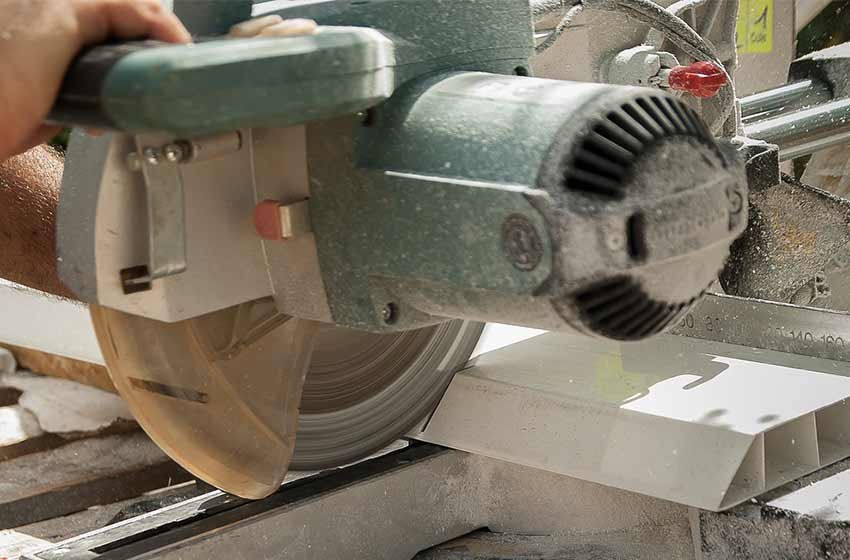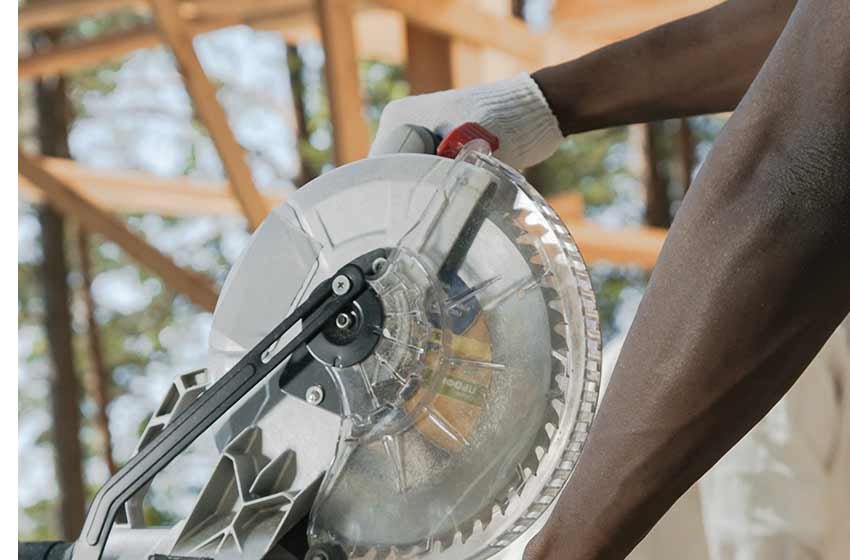Our Complete Guide: Making A Straight Cut With A Circular Saw
Circular and straight rarely go together, some would even go as far as to say they are an oxymoron - and they wouldn’t be wrong!
No matter how hard we try, when we try to make a straight cut with a circular saw, the blade somehow finds a way to wander away from the line.
Then we try and straighten the blade up, get it back on track, only for it to bind up.
Been there? Me too.
What is the best tool when it comes to cutting a straight line? A table saw would be your best bet when it comes to cutting a straight line. They’re fast, efficient and can perform lots of cuts.
However, they can be quite pricey and not something you always need so are there any other methods to getting that straight cut? Absolutely, a circular saw can be used and produces some very precise results so let’s look at this in a bit more detail!
Use a Guide to Make Straights Cuts with a Circular Saw

If you’re looking at cutting a piece of wood that is 8 inches or wider then this method could be ideal for you. So let’s look at how you’ll go about it.
Place the piece of wood onto a scrap wood if you can. The scrap wood provides extra support when it comes to making the cuts.
If that isn’t possible and you are planning on cutting while on the ground, then that’s fine too, though it is best to ensure that the material you are cutting is sufficiently high enough away from the ground, this will stop the blade making contact with it. As I’m sure you can imagine, that wouldn’t go down very well!
Now once you’ve done that, take some measurements of the wood and create a pencil in where you are planning on cutting.
Tip: Pencil up around 3 or so dashes. Once you have done that, take a straight edge and connect the dashes together. This will ensure your line is straight all the way.
Now you are ready to perform the cut. Ensure that you have lined up your tool precisely with the line that you have marked. It is always best to make sure that the blade isn't making contact with the board before you have started the cut. Once you have done that, you can start cutting!
Once completed you should be left with a nice straight cut.
Create As Cutting Guide As A Way To Get Straight Cuts Of Wood
Haven't got a cutting guide? No problem, you can make one! It's much easier than you might think.
For those wanting to cut longer and/or thinner pieces of wood, plywood for example, this can be a really great method.
Keep your guide simple, it doesn’t need to complicated. All you need is to have a straight board, this should be the same length as the piece of wood that you are planning on cutting. In addition to that, you will need some clamps.
First things first, mark your measurements. If it is quite a large cut, use the method above with joining dotted lines to ensure a straight line throughout.
Now you should take the measurements between the blade and the left edge of at the bottom guard of your tool.
Tip: Most circular blades do have measurements on the guard, use them and this can be a great way to be sure of your accuracy.
Mark some dashes at the end of the board, these should be aligned with the line that you have previously drawn.
Now grab your tool and hold it to the edge, take time to check if the guard edge and blade line up perfectly to the lines.
If they do, mark a dash on the same distance on the other side of the board.
Now it’s time for the clamps, use a level or straight board and clamp the board, lining it up with the dashes. This is your cutting guide!
Take your circular saw and make sure that the guard edge is lined up with your cutting guide while you are cutting.
Tip: If you can clamp your material to a sawhorse, this will reduce the movement when you are cutting and make your job easier!
If that is all set, you're good to start cutting!
How to Cut Thicker Pieces Of Wood With a Circular Saw

Now you have the basics nailed, what about the thicker bits of wood?
These too shouldn’t be a problem, one thing which would really make the job easier is a sawhorse or a workbench.
By clamping the wood you want to cut to a sawhorse (or even a workbench if you have one), will give you the required stability and ensure a degree of safety that otherwise you wouldn’t get when it comes cutting up wood that is particularly thick.
Tip: Simple one but make sure that your work area space is plentiful and that you have enough space to move around. This can get overlooked but it’s important.
Using your clamps, secure the wood. If you don't have clamps, you can use nails to the section of wood that you won’t be using.
The part without the support of the clamp or nails will be the section that you are intending to cut. Now things are secured, draw a line where you intend to cut. A ruler or speed square ought to do this nicely.
Once you are happy with your line, you are ready for the cutting process.
Put you circular saw 1 ½ inch from the wood you are planning on cutting. You should then be able to see whether or not the blade is lined up correctly.
Apply a bit of pressure to the saws handle using one hand. Use your other hand to turn the circular saw when you need to.
To maximise the results, keep an eye on the saw at all times, ensuring it is following the time.
Tip: Don’t stop cutting once you have started. Keep going until you have cut through. Getting your saw started again can be very difficult and is likely to ruin the cut.
Keep the pressure on the saw so it sticks close to the wood, failing to do this can result in it veering away from your cutting lines.
Should you find that the saw has started to move away from the guideline (it happens to us all), you are able stop the saw, move around 4 to 9 inches away from the cut you had just made. Then you can start again but do so slowly.
Precision is vital to any cut, especially thicker pieces of wood so don’t forget to keep the pressure on for those neat clean cuts.
Related Questions

How do I reduce circular saw kickback? A kickback is commonly caused by incorrect blade depth so one way to reduce this is by ensuring you are using the correct blade depth.
How do I get the best out of my circular saw? The blade is a key element to any saw and a circular saw is no different. Ensuring the blade is of good quality will go a long way to getting the best out of your tool.
I don’t have a table, can I still use a circular saw? You sure can! Investing in some clamps is a great alternative. This way you can secure the material to suitable places.
Please, never hold the wood with one hand and cut with the other. It isn’t going to end well and likely lead to an injury. Not to mention the accuracy of the cut will be lousy so always ensure the wood is secured using other methods.














